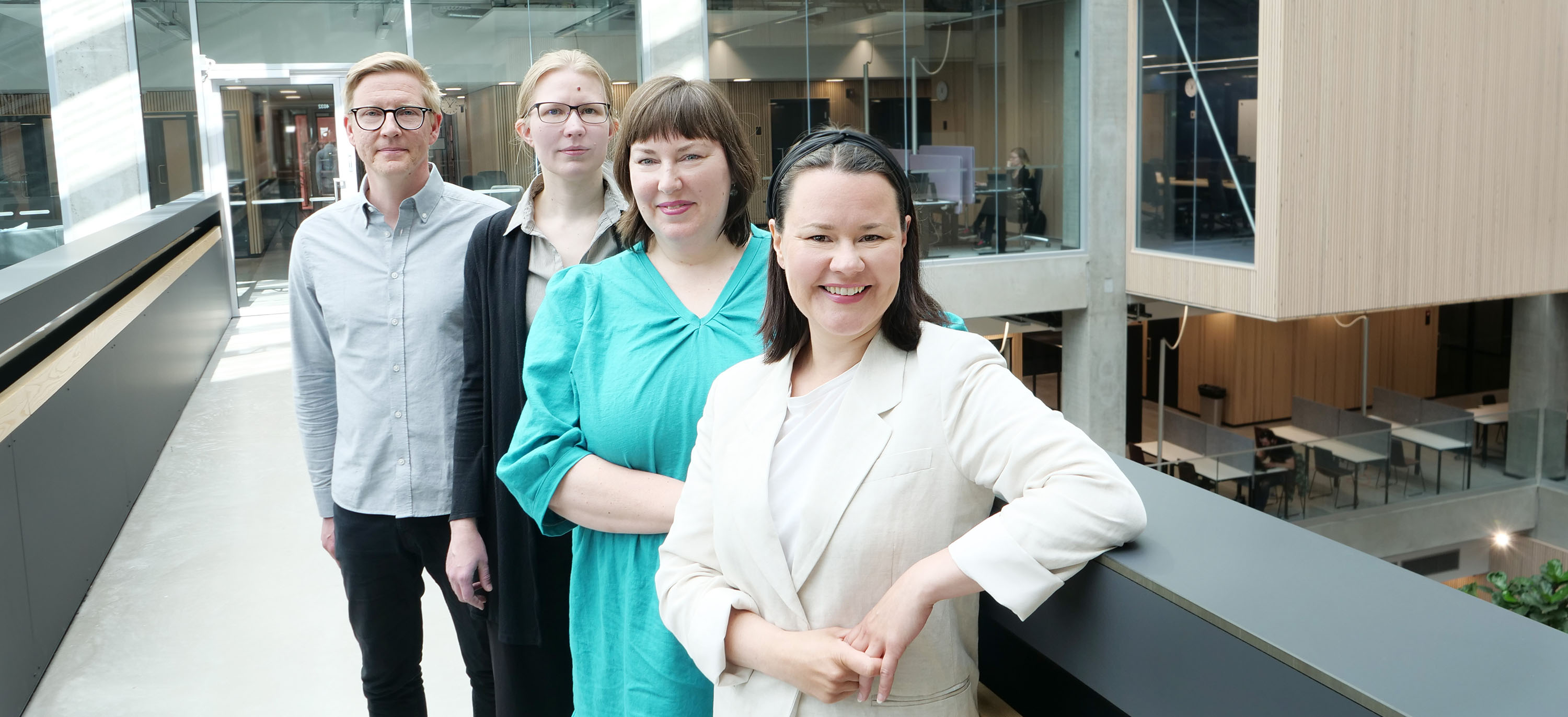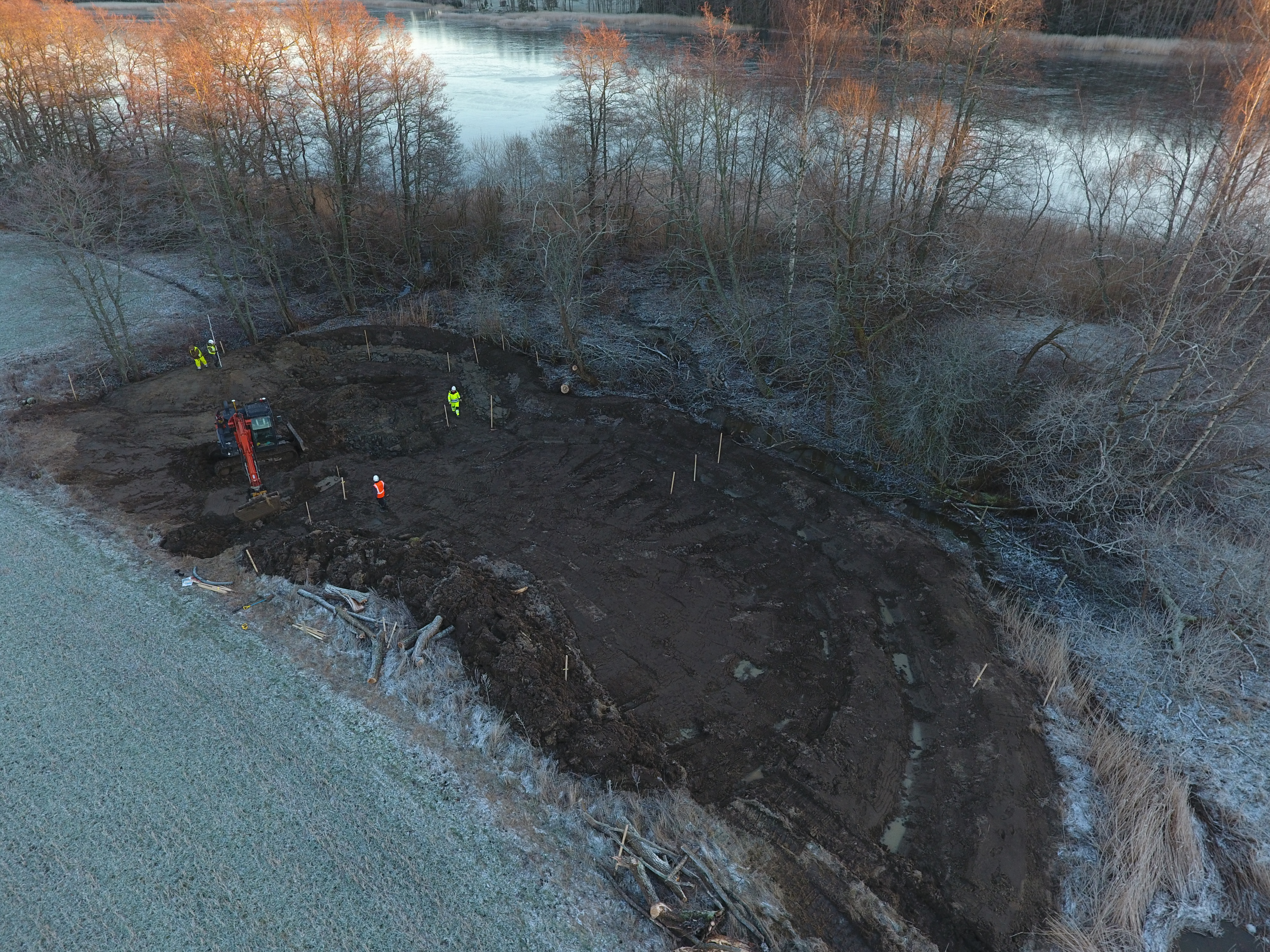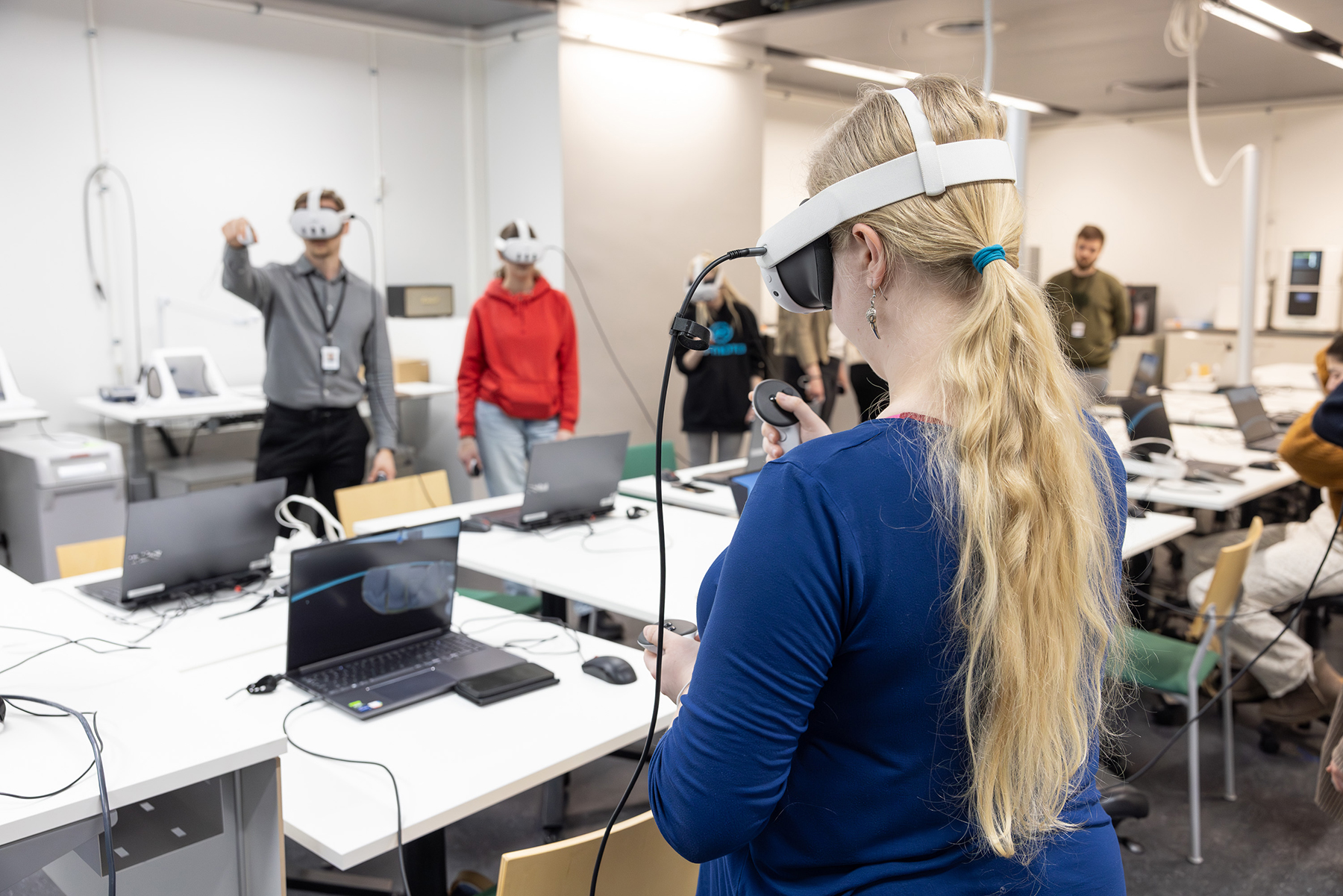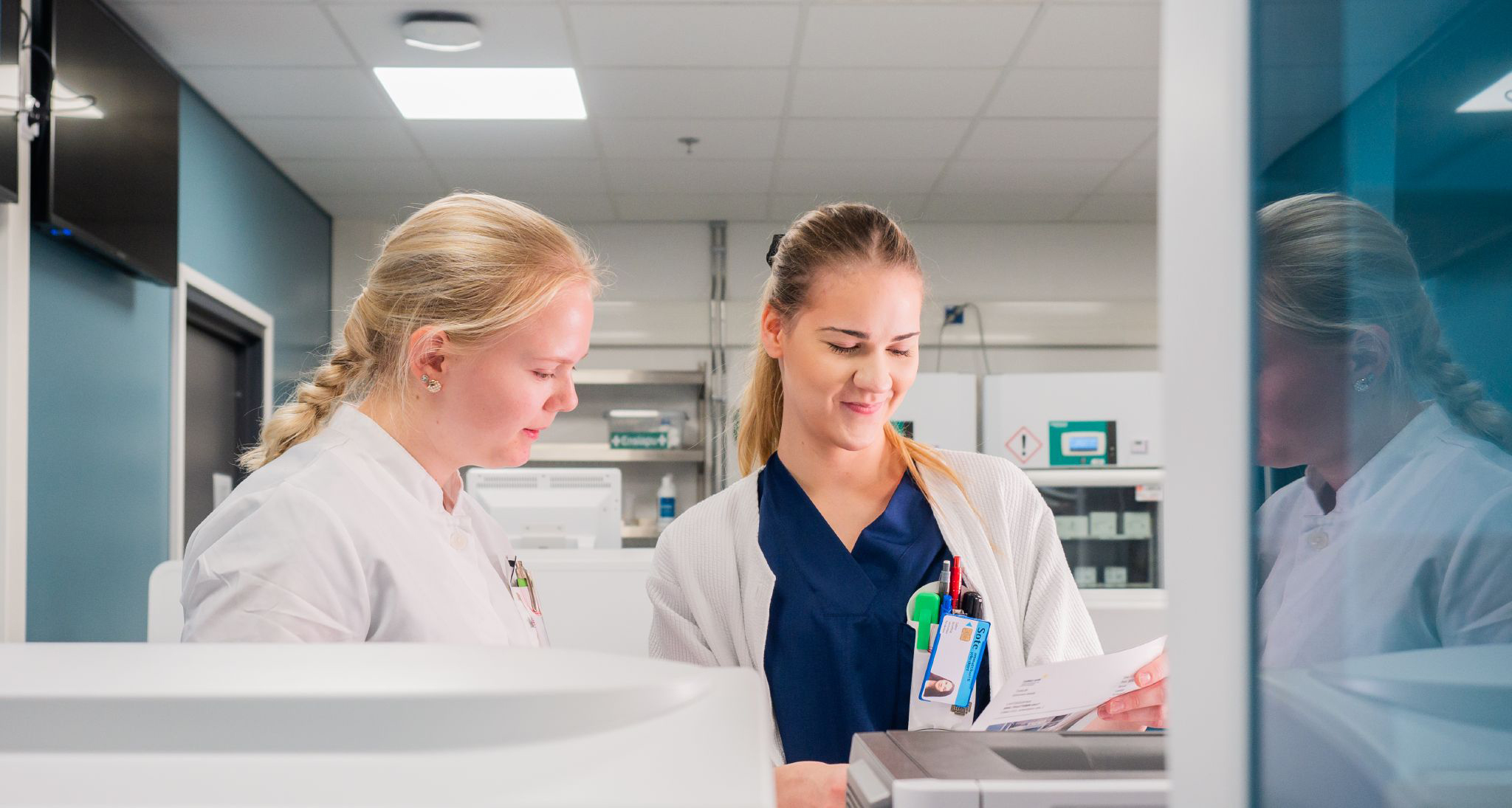More and more people know that ICT equipment takes a lot of energy to manufacture. The main challenges in this sector are related to electronic waste, which generates more than 53.6 million tonnes per year. The MitViDi project developed a tool for public purchasers to assess the environmental impact of ICT system procurement.

The project involved Sonja Lankiniemi (right), Annika Holmbom, Anne-Mari Tuikka and Kimmo Tarkkanen.
Published:
Edited:
Text and photo: Siiri Welling
ICT equipment uses a lot of rare raw materials, and the extraction of materials usually takes place under poor working conditions.
Despite this, it has hardly occurred to many people that significant emissions are also generated during the life cycle of equipment. For example, the amount of energy it takes to run software or ICT infrastructure.
“Usually, when considering emissions, attention is focused on transport and food, but it is not considered that ICT devices and the software they run also have an impact on emissions. The situation is complicated by the fact that there are still no indicators for examining the impact of software on emissions,” says Sonja Lankiniemi, a specialist at Turku University of Applied Sciences.
Lankiniemi has led Turku University of Applied Sciences’ contribution to the MitViDi project (Metrics for Green Digitalisation in Public ICT Procurement), which develops a tool for public procurers to assess the environmental impact of ICT system procurement. The project is coordinated by the University of Turku. Turku University of Applied Sciences has collected, compiled and analysed information on ICT procurement from various stakeholders.
ICT equipment and software account for a large share of public procurement and are also prominent in the procurement of individual operators.
The Ministry of Transport and Communications estimates that ICT equipment and services account for around 4-10% of global electricity consumption.
“ICT equipment and software account for a large share of public procurement and are also prominent in the procurement of individual operators. In reducing the carbon footprint of public authorities, ICT procurement should also be a focus,” says Anne-Marie Tuikka, a specialist at Turku University of Applied Sciences.
Egg or chicken situation
The public sector purchases more than €1 billion worth of ICT equipment and services every year. In 2021, it was the largest procurement category in Finland. It is therefore particularly important for large organisations to pay attention to the emissions from ICT equipment and services. However, the problem so far has been that public organisations have limited tools to assess the sustainability of software. For ICT, the existing sustainability criteria relate to equipment and, for example, to extending its life cycle.
In the case of software, the lack of criteria means that the environment is not taken into account in tenders. If public organisations do not demand sustainability in software procurement, it will not emerge on the market. This creates a chicken and egg situation in ICT procurement.
“What is special about all this is that ICT experts are quite well aware of the energy consumption and carbon footprint of software and hardware. It’s just that the efficiency of applications has not needed attention for a long time, because there is enough capacity to run heavy software. So green coding is already being practised in companies in the sector, and fortunately they seem to have the skills and willingness to make a difference,” says Kimmo Tarkkanen, a lecturer at Turku University of Applied Sciences.
According to the Ministry of Transport and Communications, environmentally sustainable digitalisation means energy-efficient, carbon-free electricity, climate-friendly data economy, extending the life of equipment, recycling precious metals, increasing data transparency, raising consumer awareness and exploiting emerging technologies. For software, the magnitude of emissions is influenced by factors such as code quality, data transfer and updates. Measurement is difficult, but by measuring different types of software against each other, standards could be defined that would allow for an assessment of emissions that would not require complex calculations, but rather compliance with certain criteria.
The results of the project have been published in the form of a guide. The guide covers sustainability in the ICT sector and software and is intended for both ICT procurers and companies in the sector. In addition, an online tool for evaluating software procurement has been published on the project website. At Turku University of Applied Sciences, the research is conducted by the Circular Economy Business Models research group together with the Health Technology research group.
The article was published on 11.9.2023 on the previous turkuamk.fi website.
Get to know our research
Read next
-
Press Release

A wetland in Parainen improves the area’s natural values and water quality
A new water protection reservoir designed by Turku University of Applied Sciences has been completed at Sydänperti in Parainen. The wetland is designed to improve the water quality…
-
Press Release

Wearing VR glasses in dental technology teaching – Taking learning to a new level
Something exceptional is happening at Turku UAS: for the first time in their studies, dental technology students get to experience the processing of 3D models in a completely…
-
News

Artificial intelligence is developed to help nurses to reduce their workload
The PROFIT project examines how artificial intelligence could support the work of nurses. The technology developed in the project will be tested with nursing students of Turku UAS.…
